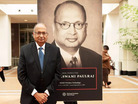 Getty Images
Getty ImagesYou have been using mental models all your life. A mental model is an image or representation in your mind about how the world works. It’s a ready tool for you to quickly understand situations, find solutions, take decisions and simulate reality inside your head. Thus the more mental models that you can use from your toolkit, the more effective you are. Consider a simple mental model like multiplication—it’s faster than adding the same number many times. Like any tool, a mental model is neither correct nor effective all the time. However, having many mental models gives you multiple paths to a good result. Here are a few great models to understand and use to supercharge your career.
First Principles
Elon Musk is disrupting multiple industries at the same time including space exploration and automobiles. His biggest mental model is reasoning from first principles. This comes from physics where you start thinking from the fundamental basic levels that you know to be true. This is the best way to practice thinking on your own, separating a large problem into smaller parts and finding new answers. For Musk, buying a rocket was expensive so he started with the basic price of aluminium, copper etc and figured out how to reduce a bulk of the cost.
Circle of Competence
This mental model is your single most valuable strategy for success and wealth in your career. Investment billionaires Warren Buffet and Charlie Munger developed this concept and the motto: “Know your circle of competence, and stick within it. The size of that circle is not very important; knowing its boundaries, however, is vital.” Using this, you can focus your efforts for best rewards and know where you need help. Thereafter, always keep learning to expand your circle.
Feynman Technique
How do you master the learning process? Bill Gates called Richard Feynman the best teacher I never had. The Nobel prize winning physicist and teacher is known for his four-step learning technique. Study your chosen topic. Try to explain it to a 10-yearold, either physically or in your mind. Where you struggle, go back and understand the topic better. Repeat and simplify. Thus, true mastery is only when you can explain the most complex subject in simple words.
Regret Minimisation
Jeff Bezos, currently the world’s richest man, used the Regret Minimisation framework to quit a great job and participate in the internet boom and start Amazon. Are you struggling with a tough decision like switching a career? Ask yourself whether you will regret your proposed decision when you are 80 or even five years later? Go with the option that causes the least regret.
Reframing
When you are stuck for answers to a question, the best mental model is to reframe the situation. As you try new perspectives, the question will change and multiple answers will come through. One way is to switch between past and future —if this were true, what would I do now? Similarly between the views of different people, liability vs asset or victim vs choice. Ask: What have I gained in the pandemic? Or, what small step can I take to avoid this situation? What would I do if I wanted to lose customers/ get fired? Am I doing anything like that now?
Availability Bias
Daniel Kahneman, the Nobel prize winning psychologist, says that we tend to take mental shortcuts in decision making by relying on the most recent information that we remember. Thus, you may be judged heavily on a recent mistake or success at work. Your customers will remember the recent advertisement You will be biased by the recent news. Taking notes, reviewing past data and questioning why can guide you to better results at work.
Actor Observer Bias
When judging people as an observer, you believe all actions come from their personality leading to Fundamental Attribution Error. However, as an actor, you may believe that your own actions arose from the situation and not personality. This leads to a large blind spot in your career and poor relationships. Use MRI—Most Respectful Interpretation—to judge any action and thus improve your options and relations.
Thinking Grey
Steven Sample in his book The Contrarian’s Guide to Leadership asks you to pause on instant judgments and snap decisions. Don’t see the world in black and white and see the grey in between. Hence, delay your decision as much as is reasonable to buy time to think, gather information and to go beyond your immediate thoughts around stupid, bad, false, enemy etc. This improves both your leadership and quality of decision.
Multiplication by Zero
The best way to avoid complete failure is to remember that any large number loses its full value when multiplied by zero. Prabhkiran Singh, a Founder of Bewakoof, believes sudden deaths and breakdowns of stressed professionals and entrepreneurs is a zero outcome case and thus invests an hour in daily exercise and says no to unhealthy habits and addictions. Which tasks or choices in your project, career or life carry a multiplication by zero risk?
Use your tools
Pursue
Before you use, you must know. Choose the mental model you like and read up online. Pay attention to the stories around it. You will get a sense of when it works and doesn’t. Think about similar stories from your past or current work where this model works or explains the event.
After knowing the model, write it down in a note card or print it. Similarly, pursue as many models that interest you and print or write out small cards. Put them up as a wall paper on your computer or phone or pin them to your desk board. Keep them around where you will see them often and thus remember.
Pick
Now learn to use a few at a time until it becomes second nature. Pick up the top three or five that seem most relevant to you. Think about situations where you will need them. Starting a new project? Apply your chosen mental models to come up with new options and methods to take decisions and choose paths.
Pause
Next examine that 80% of your day where you work without thinking. Pause the flow of your work and examine your long term and short term assumptions. Using your favourite models, question your career, role, tasks and what you are doing right now. Is there a better answer?
Partner
To become an expert with your models, find a friend who will enjoy this journey as much as you do. Partner with her on this path. Discuss your excitement about what you learnt, what worked and what didn’t, The more you share and bounce off, the faster you become a mental model master.
(The author is a career coach, mentor and the author of Yoursortinghat.com.)
(Your legal guide on estate planning, inheritance, will and more.)
Download The Economic Times News App to get Daily Market Updates & Live Business News.
Read More News on
(Your legal guide on estate planning, inheritance, will and more.)
Download The Economic Times News App to get Daily Market Updates & Live Business News.









 Get Unlimited Access to The Economic Times
Get Unlimited Access to The Economic Times
